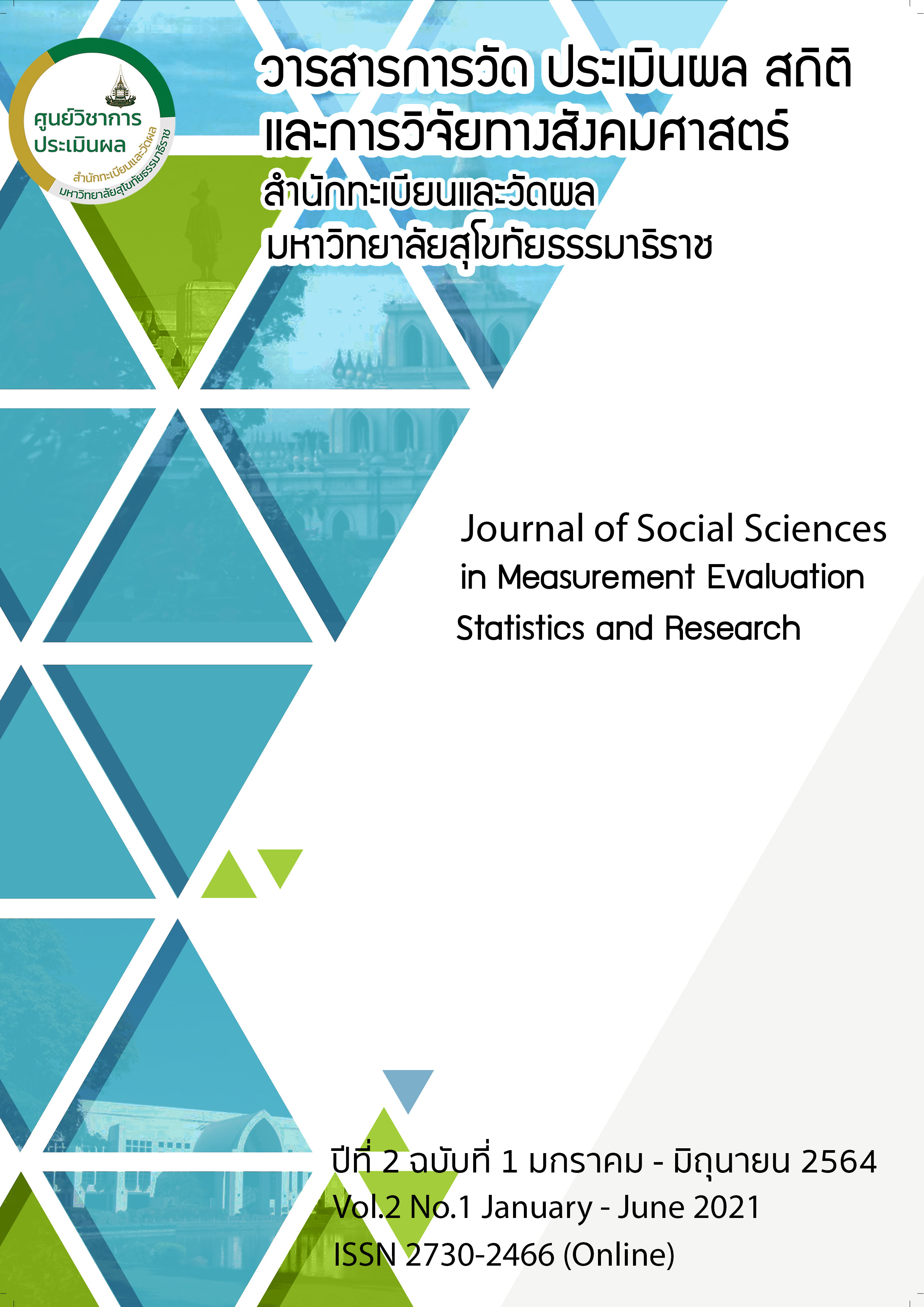The Evaluation of Training Program of Care Managers in 2021: Using Stufflebeam’s CIPP Model
Main Article Content
Abstract
To evaluate the of training program of care managers in 2021 by applying Stufflebeam’s CIPP Model. Simple random sampling was used to recruit 65 persons. Data were collected by using the test and questionnaire. Reliability of total scale was 0.86. Data were analyzed by using descriptive statistics, and paired t-test. The results revealed as follows: context factors, foundation and rationale, objectives, and program plan of the training program of care managers in 2021 were appropriated. Input factors; such as lecturer, curriculum coordinators, instructors, materials, time, place, and budget were appropriated. Process factors; such as planning, program activities and program evaluation were suitable with the curriculum aims. The problems and obstacles was postponing the training period due to the Covid-19 epidemic situation, leading to postponement of Phase 2. Product factors; 1) Overall of participants 65 people had knowledge scores passing the criteria of 60% (100%) 2) The quality of participants’ post- training knowledge average score was significantly higher than their pre-training score at the p < 0.05 level. The attitudes towards taking care of the elderly were the highest level. (M=4.38, SD = 0.39) 3) The overall of participants agreed were the high level. (M=4.43, SD = 0.58) and the decision to manage the next training program that further training program should be improved taking all comments from participants who attended the previous training program into account.
Article Details
ข้อความและบทความในวารสารการวัด ประเมินผล สถิติ และการวิจัยทางสังคมศาสตร์ เป็นแนวคิดของผู้เขียน มิใช่ความคิดเห็นของกองบรรณาธิการวารสาร จึงมิใช่ความรับผิดชอบของวารสารการวัด ประเมินผล สถิติ และการวิจัยทางสังคมศาสตร์ บทความในวารสารต้องไม่เคยตีพิมพ์ที่ใดมาก่อน และสงวนสิทธิ์ตามกฎหมายไทย การจะนำไปเผยแพร่ ต้องได้รับอนุญาตเป็นลายลักษณ์อักษรจากกองบรรณาธิการ
References
Faul, F., Erdfelder, E., Buchner, A., & Lang, A. G. (2009). Statistical power analyses using G*Power 3.1: Tests for correlation and regression analyses. Behavior Research Methods, 41(4), 1149-1160.
Pibanwong, P., Teeyapan, W., Nadoon, W., Apichutboonchock, S., Phuarsa, B., Chopsiang, L., Harasan, P., Jantasen, O., & Palachai, T. (2019). The Evaluation of Training Program of Nursing Specialty in Family Nursing Practitioner: A study in Boromarajonani College of Nursing Sanpasithiprasong. Vajira Medical Journal: Journal of Urban Medicine, 63(3), 175-184.
Stake, R.E. (1967). The Countenance of Educational Evaluation. Teacher College Record, Chicago: University of Chicago Press.
Stufflebeam & Shinkfield. (2007). Evaluation Theory, Models and Applications. John Wiley and Son.
Thailand Nursing and Midwifery Council. Thailand Nursing and Midwifery, Announcement: Criteria for the Preparation of Specialized Nursing Training Programs. Available from: https://www. tnmc.or.th/news/. Retrieved March 20, 2021.
Tyler, R.W. (1943). Basic principles of curriculum and instruction. Chicago: University of Chicago Press.


